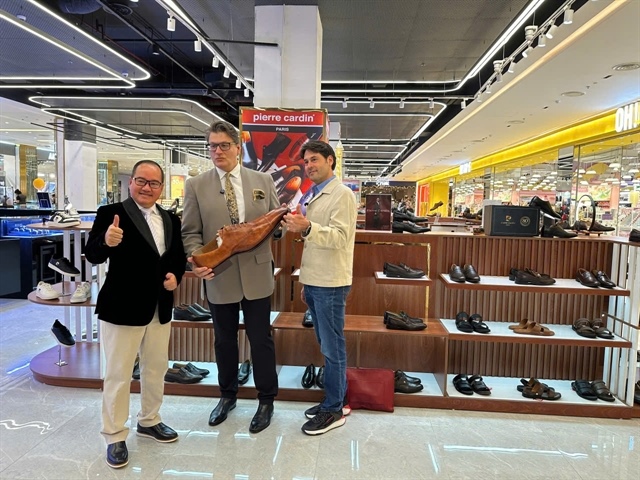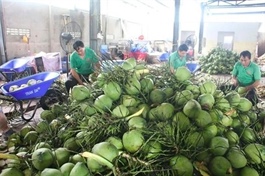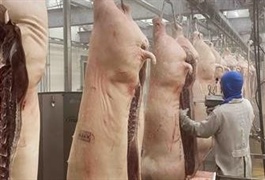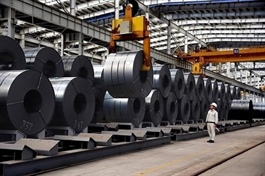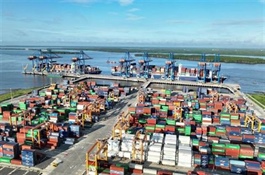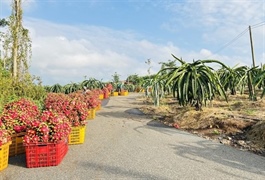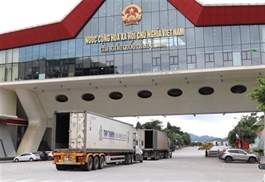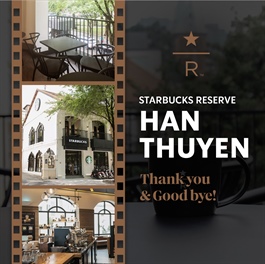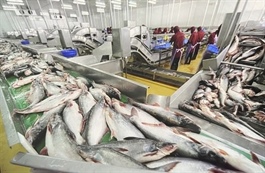Exploring China’s live-streaming hubs that serve goods sales to Vietnam
Exploring China’s live-streaming hubs that serve goods sales to Vietnam
Chinese enterprises have developed systematic centers serving live-streamed sessions close to the border to sell goods to customers in Vietnam.
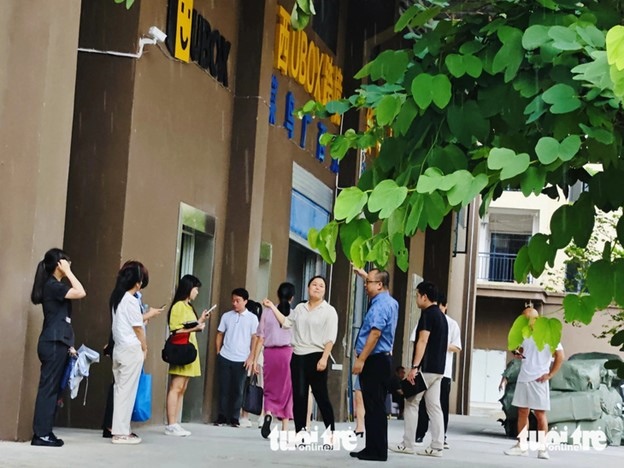
Vietnamese people are employed to introduce products on e-commerce platforms at a live-streaming center in Pingxiang, China. Photo: Bong Mai / Tuoi Tre |
Through these centers, some four to five million orders are shipped to Vietnam every day.
As each order costs VND100,000-300,000 (US$4-12) on average, Vietnamese shoppers spend $45-60 million buying products from China via e-commerce platforms per day.
The amount is around $1.3-1.9 billion per month, according to the Vietnamese National Assembly’s Finance - Budget Committee.
Entering Yunnan Province in China, which borders Lao Cai Province in northern Vietnam, via the Hekou International Border Gate, Tuoi Tre (Youth) newspaper reporters saw hundreds of stores with both Chinese and Vietnamese information on their signboards.
The reporters later reached the China-ASEAN cross-border e-commerce logistics park, which is considered a live-streaming hub for selling Chinese goods to Vietnam.
The huge park operates under the all-in-one model and features various functional areas.
The facility carries a price tag of $525 million and covers an area of 128 hectares, as Tuoi Tre understands during its reporters' field trips along the border.
A Chinese man working in the park said the five-story building, developed by the Chinese government, has a first floor for product displays, while the remaining floors, which have Vietnamese Internet networks, are used for livestreaming activities.
As a result, sales channels on Facebook can be accessed in China.
The park includes hundreds of rooms spanning 15-20 square meters each. They are given an ordinal number and are well soundproof.
The Pingxiang international live-streaming area, located on the border with Vietnam’s Lang Son Province, is a sprawling complex characterized by tightly clustered, solid buildings.
These structures prominently display the logos of major e-commerce platforms such as Shopee, Lazada, and TikTok Shop.
Inside, a series of glass-walled livestreaming rooms are outfitted with state-of-the-art computing and lighting systems, microphones, and recording devices, according to an employee familiar with the operations.
|
|
| Vietnamese people visit the live-streaming center in Pingxiang, China, which borders Vietnam’s Lang Son Province, to learn about business models. Photo: Bong Mai / Tuoi Tre |
How do live-streaming centers operate?
Live-streaming centers in China, particularly those near the Vietnamese border, are rapidly growing hubs of e-commerce activity.
An employee at the Hekou live-streaming center told the Tuoi Tre reporters that business is thriving, with an increasing number of enterprises setting up operations.
These centers have established strong connections with transport service providers in Vietnam, facilitating cross-border trade.
Vietnamese merchants frequently visit to purchase goods for resale, and the center is expected to become even busier as more infrastructure is completed.
Plans are already in place to build a cold storage warehouse on an adjacent lot to support the export of farm produce and fruits to Vietnam.
At the Hekou center, Vu, a company manager, explained that the live-streaming area is home to around 60 companies whose operations are tightly controlled, with close monitoring of goods, sales processes, and revenue.
Each company is responsible for managing a group of traders, and strict requirements must be met to operate at the center.
For instance, Vu’s enterprise benefits from one to two years of rent-free space and live-streaming rooms but must meet specific targets for revenue and product volume.
In Pingxiang, Zhong Cheng, who manages 20 live-streaming rooms, reported daily sales of around VND3 billion ($120,195), with figures soaring to tens of billions of Vietnamese dong during major sales events.
All goods sold at these centers are made in China, underscoring the country’s dominance in the e-commerce supply chain.
|
|
| Many Vietnamese people are employed to work at a live-streaming center in Hekou, China. Photo: Bong Mai / Tuoi Tre |
Recruiting only Vietnamese for live streams
Although many Chinese workers at the center speak Vietnamese fluently, only Vietnamese presenters are allowed to appear on live streams to introduce products.
"This is a rule," an employee explained. "No matter how well Chinese people speak Vietnamese, they are not permitted to introduce products on live streams. Only Vietnamese nationals can do that."
The Vietnamese presenters are brought to Pingxiang through local employment brokerage firms.
After being trained in China, mainly to create a vibrant atmosphere in live-streaming rooms, those Vietnamese people will sign labor contracts with a monthly salary of VND15-20 million ($600-801) and have their accommodation and visa application costs covered.
A live-streaming room often has two employees with one inviting online shoppers to buy products and the other ringing a bell to make the live-streamed sessions more vibrant and keeping a close watch on orders on a screen.
During a large live-streamed session, some 20-100 other people, including those from brands and e-commerce platforms, cameramen, and lighting staff, support the two main employees.
There are three live-streaming shifts per day, with each lasting three to five hours.
In Hekou, N., a Vietnamese woman working as a secretary to Vu, said she had worked at the live-streaming center for over a year.
Chinese products are cheap and produced in bulk, so many people come here to buy wholesale and attend live-streaming training courses, N. said.
To serve cross-border sales, these areas also have logistics facilities, a customs clearance area, and zones for international cargo shipment and innovation services, besides live-streaming amenities.
Goods are packaged, cleared through customs, and then transported to Vietnam, where local delivery service providers handle the final leg of getting products to customers.
To boost their competitiveness, some Chinese traders have even developed or leased warehouses in Hanoi and other Vietnamese provinces.
This systematic process streamlines operations and helps lower the selling prices of products.



